Personalized Marketing
 As a child you might remember some of the antics of cereal mascots as they attempted to steal, steal back, or keep people from stealing their Lucky Charms, Cookie Crisp, or Trix. Mascots in their current incantation have been stealing our hearts and brains the same way for the last two hundred years, but that is all changing.
As a child you might remember some of the antics of cereal mascots as they attempted to steal, steal back, or keep people from stealing their Lucky Charms, Cookie Crisp, or Trix. Mascots in their current incantation have been stealing our hearts and brains the same way for the last two hundred years, but that is all changing.
In the early 1800’s sports teams, one of the most popular forms of entertainment at the time, would keep animals so that they could bring them out on the field with them during games. They were a spectacle as much as they were a symbol; the players often wore patches with that animal on them.
Native Americans have historically personified animals with human characteristics and conversely tried to give themselves animal like characteristics. For example, the Coyote is universally known as the “Trickster” in the Navajo culture. Other tribes has incorporated mascots into their art in places like Totem poles or blankets.
Mascots have always been a symbol, but it wasn’t until the 1950’s and 1960’s did they start to become something more. Advertising guru Leo Burnett, a humble Midwesterner notorious for wearing wrinkly suits and having an unmatchable curiosity and work ethic, created the Jolly Green Giant to reward a canning company for bringing business to his fledgling Midwestern advertising agency. This mascot still exists today, and is one of the most identifiable characters on the grocery store shelves. He’s a cornerstone of the General Mills franchise for vegetable products.
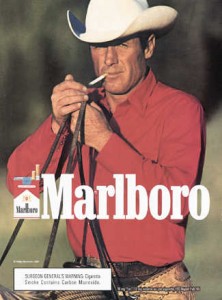 Leo knew that the power of an ongoing relationship with a product would lead to increased sales and a happier consumer. It was this drive that lead him to make some of the most prevalent mascots in the world. In 1994, he was inducted to advertising hall of fame for what David Ogilvy calls his “greatest monument”, The Marlboro Man. This masculine cowboy inspired a generation of smokers to pick up the filtered Marlboro cigarettes, rather than the unfiltered Lucky Strike cigarettes that were the standard after World War II. This campaign took Marlboro from a 1% market share to the top cigarette producer in the world — and they haven’t moved since.
Leo knew that the power of an ongoing relationship with a product would lead to increased sales and a happier consumer. It was this drive that lead him to make some of the most prevalent mascots in the world. In 1994, he was inducted to advertising hall of fame for what David Ogilvy calls his “greatest monument”, The Marlboro Man. This masculine cowboy inspired a generation of smokers to pick up the filtered Marlboro cigarettes, rather than the unfiltered Lucky Strike cigarettes that were the standard after World War II. This campaign took Marlboro from a 1% market share to the top cigarette producer in the world — and they haven’t moved since.
One of the most important parts of the Marlboro campaign was the ubiquity of the mascot. The Marlboro Man was just as poignant sitting above Times Square on a billboard as he was on the pages of GQ magazine. His transcendence allowed Marlboro to build an ongoing relationship with his viewing public. Burnett died in 1971, and was unable to see the enduring nature of his work, but his fundamentals are still very much alive in the advertising world today.
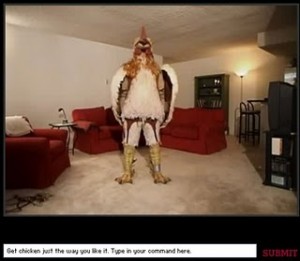 Like anything though, the devil is in the details. Companies, and more importantly, advertising agencies are changing the way they approach mascots. One of the first successful twists on the time tested mascot was in 2004. Ad agency Crispin Porter and Bogusky (CP+B) created a campaign for Burger King to promote their new Tender Crisp sandwich. At a time where almost no one knew what a “Viral Video” or “Online Guerilla Marketing Campaign” was, they introduced a character called the Subservient Chicken. The concept was simple, it was a full grown man dressed in a chicken suit standing in a room a la webcam, and a box below it imploring you to tell him what to do. The Chicken had over 100 different things he could do including various Michael Jackson dance moves, and walking like a German soldier. The Chicken was an instant hit.
Like anything though, the devil is in the details. Companies, and more importantly, advertising agencies are changing the way they approach mascots. One of the first successful twists on the time tested mascot was in 2004. Ad agency Crispin Porter and Bogusky (CP+B) created a campaign for Burger King to promote their new Tender Crisp sandwich. At a time where almost no one knew what a “Viral Video” or “Online Guerilla Marketing Campaign” was, they introduced a character called the Subservient Chicken. The concept was simple, it was a full grown man dressed in a chicken suit standing in a room a la webcam, and a box below it imploring you to tell him what to do. The Chicken had over 100 different things he could do including various Michael Jackson dance moves, and walking like a German soldier. The Chicken was an instant hit.
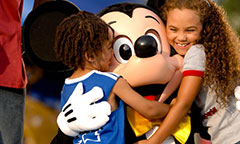 It wasn’t just about having an affinity for a particular cereal thieving rabbit, or winking back at the fish on the Tuna can, there was the possibility for interaction with your brand.The strategy wasn’t a new one, just one that had been adopted for the virtual age. Just one year earlier, Mickey Mouse turned 75 years old. If there is one company that understands the value of mascots, it’s Disney. Disney characters are given strict training never to break character or take their costumes off in view of the public. Walk through any Disney park, or go to any “Disney on Ice” feature and you’ll see the same scene played out over and over again: Children mobbing giant stuffed versions of their favorite characters for a hug or an autograph. It’s not uncommon to see a youngster tugging his Mom’s hand declaring, “See! He is real.” Disney has always been the master at letting it’s clientele develop an interactive relationship with it’s mascots; now other companies are catching on, and instead of targeting children, they’re looking to give you a new friend.
It wasn’t just about having an affinity for a particular cereal thieving rabbit, or winking back at the fish on the Tuna can, there was the possibility for interaction with your brand.The strategy wasn’t a new one, just one that had been adopted for the virtual age. Just one year earlier, Mickey Mouse turned 75 years old. If there is one company that understands the value of mascots, it’s Disney. Disney characters are given strict training never to break character or take their costumes off in view of the public. Walk through any Disney park, or go to any “Disney on Ice” feature and you’ll see the same scene played out over and over again: Children mobbing giant stuffed versions of their favorite characters for a hug or an autograph. It’s not uncommon to see a youngster tugging his Mom’s hand declaring, “See! He is real.” Disney has always been the master at letting it’s clientele develop an interactive relationship with it’s mascots; now other companies are catching on, and instead of targeting children, they’re looking to give you a new friend.
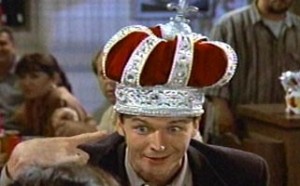 During the 1990’s there was an electronics retailer called “The Wiz” in New York and New Jersey that used to play commercials announcing that “Nobody Beats The Wiz”. In “The Junk Mail” episode of Seinfeld Elaine unknowing falls in love with an out of work mascot who was formerly “The Wiz”, because she found his commercials charming. Larry David (Writer of Seinfeld) may have been on to something when he postulated that the average person could have a relationship with a well known mascot.
During the 1990’s there was an electronics retailer called “The Wiz” in New York and New Jersey that used to play commercials announcing that “Nobody Beats The Wiz”. In “The Junk Mail” episode of Seinfeld Elaine unknowing falls in love with an out of work mascot who was formerly “The Wiz”, because she found his commercials charming. Larry David (Writer of Seinfeld) may have been on to something when he postulated that the average person could have a relationship with a well known mascot.
Brands both big and small are looking for ways not just to connect with you, but to make sure you have a fun way to connect with them. Ad Agency Wieden+Kennedy took that concept to a whole new level with there creation of “The Old Spice Man”. After a series of television commercials with actor Isiah Mustafah playing the outlandishly masculine “Old Spice Man”, they launched a YouTube campaign in which they targeted key influencers from around the internet and had “The Old Spice Man” directly address those people. He addressed everyone from 4Chan’s notorious /b/ to Christina Applegate, to that really nerdy kid next door who you try to keep from ogling your wife. It was a universal appeal, and fame or fortune wasn’t going to get you a video, it was a witty question, to which there could be a more witty answer.
The result was a series of 50 or so 1 minute YouTube videos where the brand was scantly mentioned. However, the power of the direct connection with “The Old Spice Man” yielded a 107% increase month over month for the brand. They won marketing awards and the respect of those in the industry, but more importantly, they won respect and engagement with the Old Spice brand.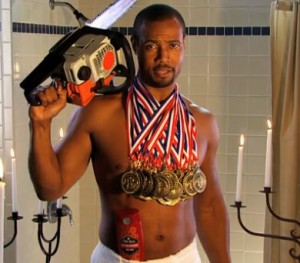
In the next year, you can look forward to many new brands trying to be your friend in one way or another. Social media is empowering the masses to broadcast their opinion louder and farther than ever before; sub par marketing isn’t going to hold up. Finding your audience and appealing to them in a personalized way that includes them as part of your strategy is going to be key to finding new customers and retaining old ones. Old Spice, Burger King, and Disney are just the beginning. The personification of products presents a way for them to interact with their consumers in ways never before possible. Would you follow your deodorant on Twitter? How about the man your man could smell like?
